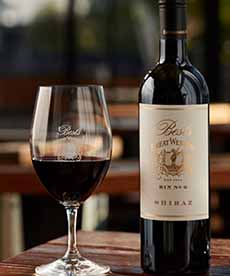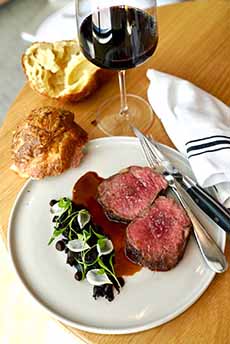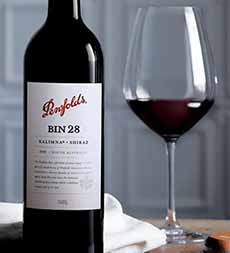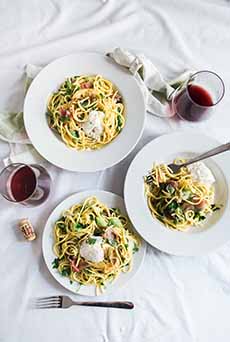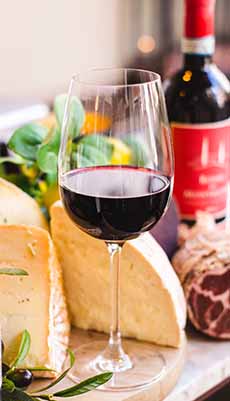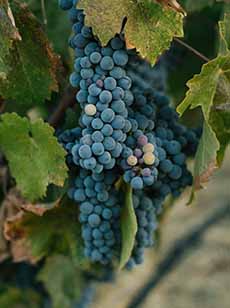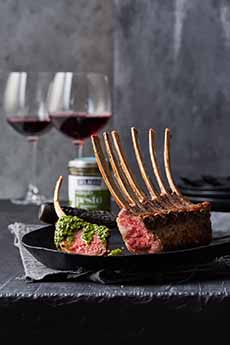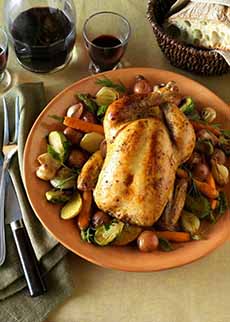Shiraz Vs. Syrah: The Difference For National Shiraz Day
|
|
National Shiraz Day is the 4th Thursday of July. It celebrates a wine that is also known as Syrah. The better-known Syrah has its own holiday, International Syrah Day, on February 16th. So what’s the difference of Shiraz vs. Syrah? Food holidays are an opportunity for THE NIBBLE to discuss a particular food or wine. This article will explain: > The year’s 25 red wine holidays. > The year’s 22 white wine holidays. Shiraz/Syrah is a dark-skinned red wine grape variety that is grown around the world. The modern Shiraz grape is identical to Syrah, which originated in southeast France. Modern Shiraz has no established connection to the city of Shiraz, Persia (modern Iran), where a wine of that name was made for centuries (but can now no longer be made*). In addition to the wines called Syrah and Shiraz, the grape itself is widely used as a blending grape in the red wines of many countries. Its fruit flavors balance out the lesser fruitiness of other grapes, resulting in a more complete wine. Neither Syrah nor Shiraz should be confused with Petite Sirah, a different wine that cross-bred Syrah with another grape‡. In the “why is this so complicated” category, Shiraz wine refers to two different wines. Forget the old, embrace the new. Ready for more confusion? In different parts of the world, the grape is called Antourenein noir, Balsamina, Candive, Entournerein, Hignin noir, Marsanne noir, Schiras, Sirac, Syra, Syrac, Serine, and Sereine. Any wine (or other agricultural product) will taste different based on its terroir†. Chocolate from beans grown in the Côte d’Ivoire tastes different than chocolate from Venezuela. After terroir, the next differentiator is style, a reflection of the winemaker’s taste in making the wine. Let’s start with Syrah from France. Syrah The world’s most famous Syrah wines, the classic Northern Rhône reds, are elegant and tannic, with restrained fruit. They tend to be dark, earthy, smokey, and even leathery, reflecting their terroir and cold climate. Syrah is the main grape of the northern Rhône and produces classic, world-famous wines such as Hermitage, Cornas and Côte-Rôtie. In the southern Rhône, Syrah is used as a blending grape in such wines as Châteauneuf-du-Pape, Gigondas and Côtes du Rhône (Grenache usually makes up the bulk of the blend). The finest Rhone wines will age for decades. Some winemakers make less-extracted styles that can be enjoyed young for their lively red and blueberry characters and smooth tannin structure. Syrah wines made in the French style, from grapes grown in other cooler climates, tend to use the Syrah names. Beyond Australia, Shiraz has become a preferred name for the wines produced by New World winemakers, who fashioned their wines in the Australian style. It’s a stylistic choice—plus the qualities provided by their terroir—to vinify their wines in a separate way from French Syrah. (It may be confusing to the consumer, but if you’ve ever wondered how Shiraz is different from Syrah, here you have it!.) In warmer climates, Syrah yields riper berries that create rich, lush, intense, fruit-forward wines (often notes of blackberries), and generally bolder wines. These wines are higher in alcohol and less tannic than French Syrah. Accents are peppery rather than smokey [source]. While the best Rhone Syrahs are vinified for aging, Shiraz wines are more approachable when young. Shiraz wines tend to be full-bodied with big, bold flavors, so they pair easily with big- and bold-flavored food. Syrah has a long documented history in the Rhône region of southeastern France, but for a long time, its origins were unknown. Then came the advent of DNA research. In 1998, a study conducted in the Department of Viticulture and Enology at University of California, Davis used DNA typing and extensive grape reference material from the viticultural research station in Montpellier, France. The conclusion: Syrah was the offspring of the grape varieties Dureza (father) and Mondeuse Blanche (mother) [source]. Both parents come from a small area in southeastern France, close to northern Rhône River. Based on these findings, the researchers concluded that Syrah originated in the region of the northern Rhône (southwestern France). And thence to Australia. It was long thought that Shiraz arrived in Australia in 1832 as French Syrah cuttings that were part of the original James Busby collection. Busby’s cuttings were planted in the Sydney Botanical Gardens, then the Hunter Valley, before making it to South Australia in the middle of the 19th century. However, Shiraz may have arrived a bit earlier, as part of the Macarthur collection which arrived in Sydney aboard the Lord Eldon in 1817 [source]. The first commercial Shiraz vineyard was believed to have been planted by George Wyndham, who started planting his vineyard at his property Dalwood in 1831. Shiraz may have been planted in that vineyard, which predated the Busby vines (any newly planted wine vines need a few seasons to propagate before they can make acceptable wines). As a result of any and all of these situations, Australia now has some of the oldest Shiraz vines in the world [ibid]. |
|
|
________________ *In modern Iran, Shiraz wine cannot be produced legally due to the prohibition of alcohol in Islam. Before the Islamic Revolution in 1979, there were up to 300 wineries in Iran; now there are none [source]. †Terroir, pronounced tur-WAH, is a French agricultural term referring to the unique set of environmental factors in a specific habitat that affects a crop’s qualities. These include climate, elevation, proximity to a body of water, slant of the land, soil type, and amount of sun. These environmental characteristics give the wines produced from these grapes a unique character. ‡Syrah is a cross between the Dureza and Mondeuse Blanche grapes of southwestern France. Petite Sirah is a cross between Syrah and Peloursin, a rare French variety from the Rhone-Alpes region, dating from 1880. It may have gotten its name because the berries are small, i.e., petite. CHECK OUT WHAT’S HAPPENING ON OUR HOME PAGE, THENIBBLE.COM.
|
||
